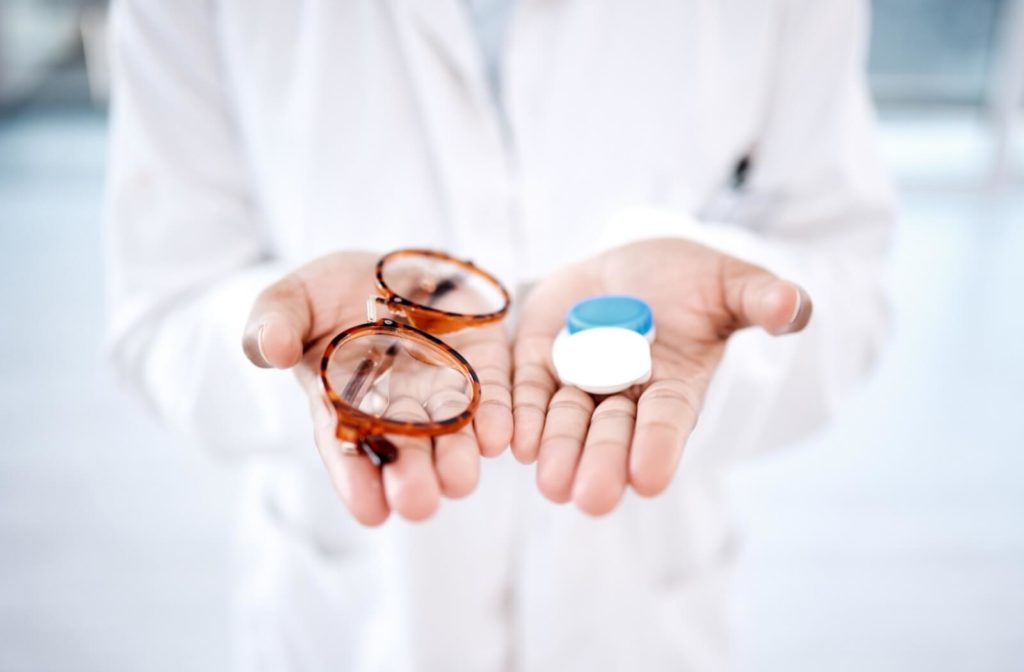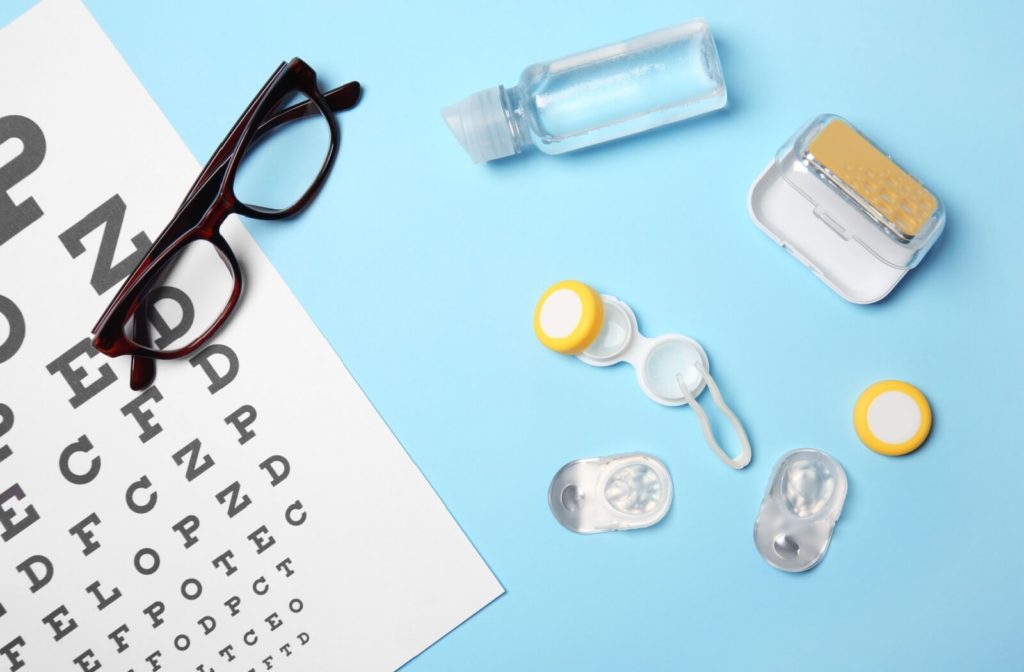Choosing between contact lenses and eyeglasses can be a big decision for many individuals for their eye care. Whether you are a seasoned contact lens wearer or someone who primarily uses eyeglasses, it’s important to understand the differences between contact lens and eyeglass prescriptions. There is ultimately a difference in prescriptions since one lens sits directly on the eye and the other is not directly on the eye. This blog post will explore the key distinctions and why it matters for your eye health.
Understanding The Difference
Contact lenses sit directly on the eye, providing a wider field of view and eliminating obstructions from frames. They can be more convenient for physical activities and offer a more natural look. However, they require meticulous hygiene and regular maintenance to avoid infections and other eye problems.
Eyeglasses, on the other hand, rest on the bridge of the nose and are easier to manage than contact lenses. They can be a fashion statement and provide some protection from environmental factors like dust and wind. Glasses can also be equipped with special lenses to protect against UV rays or blue light from screens.
Understanding these nuances helps you make an informed choice that best suits your lifestyle, comfort, and vision needs. By familiarizing yourself with both options, you can ensure optimal eye health and visual clarity.
Understanding Your Prescription
When you visit an optometrist, they perform a comprehensive eye exam to determine your prescription. This exam includes a series of tests to assess your vision and check for any eye health issues. However, one common misconception is that the prescription for your contact lenses is the same as for your glasses. While both aim to correct your vision, they are tailored to different needs and specifications.
Contact lens prescriptions consider factors such as the curvature of your eye and the material of the lens, which can affect comfort and fit. Glasses prescriptions, on the other hand, focus on the precise distance from the lens to your eyes. Understanding these differences is crucial for optimal vision correction and eye health.
Key Differences
Lens Position:
- Eyeglasses sit about 12 millimeters away from your eyes.
- Contact Lenses rest directly on your cornea.
This difference in placement affects how the lenses bend light to focus correctly on your retina. When the lenses are positioned differently, they alter the path of light entering your eyes, thereby ensuring that it converges accurately on the retinal surface. This precise focusing is crucial for clear vision, as any slight deviation can result in blurred or distorted images.
Power Adjustment:
Due to their proximity to the eye, contact lenses often require a different lens power (diopter) than eyeglasses. This adjustment ensures that the corrective power matches your specific visual needs.
Base Curve and Diameter:
Contact lens prescriptions include measurements for base curve and diameter. These dimensions ensure a proper fit on your eye, which eyeglass prescriptions do not require.
Material and Moisture Content:
The prescription for contact lenses also considers the materials used and their moisture content to maintain eye health and comfort. Eyeglasses do not have these considerations.

Why Different Prescriptions Matter
Comfort and Fit
The right contact lens prescription ensures that your lenses fit correctly and comfortably on your eyes, providing clear vision and minimizing the risk of complications. A poorly fitting lens can cause discomfort, irritation, or even damage to your eye over time, leading to issues such as corneal abrasions or infections. It is crucial to have regular eye exams and assessments with your optometrist to ensure your lenses remain a perfect fit as your eyes change and adapt.
Visual Accuracy
Accurate prescriptions for both eyeglasses and contact lenses are essential for optimal vision correction. Using an incorrect prescription can lead to blurred vision, headaches, and eye strain.
Eye Health
Contact lenses need to be meticulously prescribed to avoid complications such as dry eyes, infections, or corneal ulcers. The fitting process involves careful measurement of the corneal curvature, evaluation of tear film, and assessment of the overall eye health. Regular follow-up appointments are crucial to ensure the lenses continue to fit well and that no adverse effects develop.
Eyeglass prescriptions need to consider fewer health-related factors but still require precision for effective vision correction. Accurate measurements of the refractive error, pupillary distance, and lens curvature are essential to ensure the glasses provide clear and comfortable vision. Routine eye exams are important to update prescriptions and maintain optimal visual performance.
Contacts or Eye Glasses?
Contact lens prescriptions are not the same as glasses prescriptions, and understanding the differences can significantly impact your comfort, vision, and overall eye health. If you’re transitioning from eyeglasses to contact lenses or vice versa, consult with your optometrist to ensure you have the correct prescription tailored to your needs.
Are you curious to learn more about contact lenses or need help understanding your prescription? Book an appointment with our experienced team at York Mills Eye Care in North York, ON today and take the first step towards clearer, more comfortable vision.




